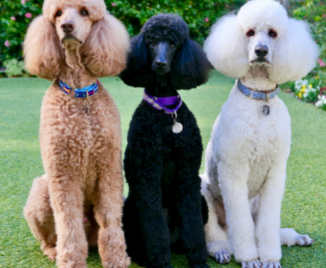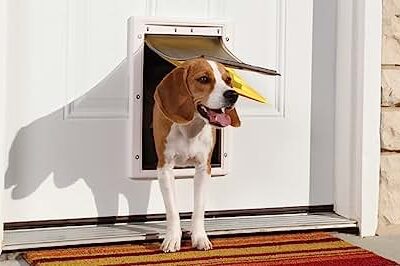Dog Anal Gland Expression
Introduction
As a dedicated dog owner, I understand the importance of keeping our canine companions happy and healthy. Among the various aspects of pet care, one topic that often goes unnoticed is dog anal gland expression. It might not be the most pleasant subject, but understanding and addressing your dog’s anal gland health is crucial for their overall well-being.
Understanding Dog Anal Glands
Firstly, let’s delve into what anal glands are and why they matter. Anal glands are small sacs located near your dog’s anus, and they play a significant role in communication and territory marking among canines. When dogs defecate, these glands naturally release a smelly secretion, which carries unique chemical information to other dogs.
Signs of Anal Gland Problems
While anal gland expression occurs naturally in most dogs, some canines experience issues that require human intervention. As responsible pet owners, it’s essential to be aware of the signs of anal gland problems. Common symptoms include excessive licking or biting of the anal area, scooting on the floor, and emitting a strong, foul odor.
Benefits of Regular Anal Gland Expression
Regularly expressing your dog’s anal glands can prevent discomfort and pain caused by the buildup of secretion. It also reduces the risk of potential infections and abscesses, which can be extremely painful for your furry friend.
How to Express Dog Anal Glands at Home
Expressing your dog’s anal glands at home can be done with proper knowledge and caution. However, it’s crucial to learn the correct technique and only attempt it when necessary. Before attempting expression, ensure you have all the necessary supplies, including gloves and a clean cloth.
To express the anal glands, gently apply pressure around the gland area using your fingers or a warm, damp cloth. It’s important to be gentle and cautious to avoid hurting your dog or causing further complications. If you’re unsure or uncomfortable, it’s best to seek professional assistance.
Seeking Professional Help
In some cases, it’s necessary to consult a veterinarian or professional groomer for anal gland expression. If you’re unsure about how to express the glands or if your dog’s symptoms persist or worsen despite home expression attempts, it’s time to seek expert guidance. A veterinarian or groomer will have the necessary experience and equipment to address the issue safely.
Diet and Anal Gland Health
A balanced diet plays a vital role in maintaining overall canine health, including anal gland health. Certain dietary adjustments can help prevent anal gland problems, such as incorporating more fiber and water into your dog’s meals. Consult with your veterinarian to determine the best diet for your dog’s specific needs.
Addressing Chronic Anal Gland Issues
If your dog experiences recurring anal gland problems, it’s essential to address the underlying issues. Chronic anal gland issues can be a sign of more serious conditions, such as allergies, infections, or anatomical abnormalities. Your veterinarian will perform a thorough examination to diagnose the cause and recommend appropriate treatment.
Tips for Keeping Dogs Comfortable
Apart from regular anal gland expression, there are other measures you can take to keep your dog comfortable. Establishing a grooming routine that includes regular brushing, bathing, and nail trimming can help maintain overall cleanliness. Additionally, creating a stress-free environment through positive reinforcement and behavior modification techniques can alleviate anxiety that may contribute to anal gland problems.
The Connection Between Dog Behavior and Anal Glands
It’s interesting to note the correlation between dog behavior and anal gland health. Dogs that experience stress or anxiety may have a higher chance of developing anal gland issues. Understanding your dog’s triggers and implementing strategies to reduce their stress levels can contribute to their overall anal gland health.
Importance of Hygiene and Cleanliness
Lastly, maintaining hygiene and cleanliness in the anal area is crucial for preventing anal gland problems. Regularly clean the area with gentle wipes or mild, dog-safe cleansers. Avoid using harsh chemicals or human products, as they can irritate your dog’s sensitive skin.
Conclusion
In conclusion, dog anal gland expression is a vital aspect of responsible pet ownership. By understanding the significance of anal gland health and taking proactive measures, we can ensure our furry friends remain comfortable and happy. Whether it’s through home expression, seeking professional help, dietary adjustments, or promoting a stress-free environment, addressing anal gland issues is essential for our canine companions’ well-being.
FAQs (Frequently Asked Questions)
FAQ 1: Can I express my dog’s anal glands on my own?
Yes, you can express your dog’s anal glands at home, but it’s important to learn the correct technique and exercise caution. If you’re unsure or uncomfortable, it’s best to seek professional assistance.
FAQ 2: How often should I express my dog’s anal glands?
The frequency of anal gland expression depends on the individual dog. Some dogs may require regular expression, while others may have naturally efficient glands. It’s best to consult with your veterinarian to determine the appropriate frequency for your dog.
FAQ 3: Are there any natural remedies for anal gland problems?
While there are no guaranteed natural remedies, certain dietary adjustments, such as incorporating more fiber, may help prevent anal gland problems. However, it’s crucial to consult with your veterinarian before making any significant changes to your dog’s diet.
FAQ 4: Can anal gland issues be a sign of a more serious condition?
Yes, anal gland problems can sometimes be an indication of underlying health conditions, such as allergies or infections. If your dog’s symptoms persist or worsen despite regular anal gland expression, it’s important to consult with your veterinarian for a proper diagnosis.
FAQ 5: Should I be concerned if my dog scoots on the floor occasionally?
Occasional scooting on the floor can be normal behavior for dogs, but if it becomes frequent or accompanied by other symptoms, it’s worth investigating. Excessive scooting may indicate anal gland problems or other issues, and it’s advisable to consult with your veterinarian for a thorough evaluation.




